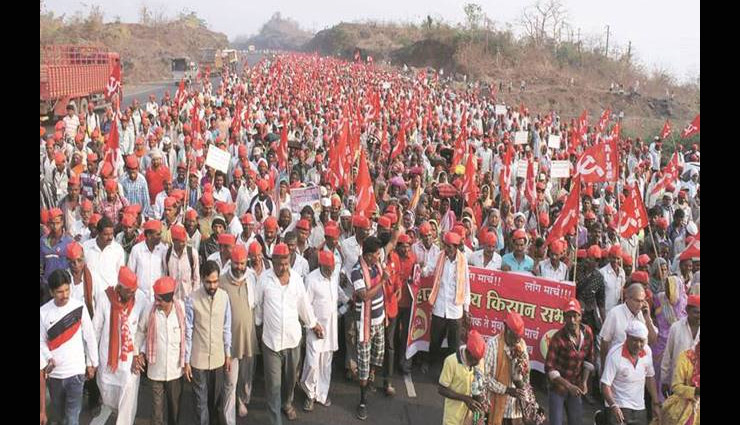Lessons To Learn From Maharashtra Farmers Silent March
By: Sandeep Gupta Sat, 17 Mar 2018 1:06:53

On March 6, more than 10,000 farmers set off on a silent march from Nashik to Mumbai. This march was called by the Akhil Bharatiya Kisan Sabha, the farmers’ organisation of the Communist Party of India (Marxist). Their main demand was transfer of land to farmers as promised under the Forest Rights Act (FRA) of 2006, better prices for their crops, and granting of loan waivers. The FRA aims to give forest land to adivasis for agriculture. The rules under the Act were framed in 2008, but implementation remains uneven. The adivasi farmers are simply seeking to enforce their rights.
As the march progressed, numbers swelled, and by the time the protestors reached Mumbai, the numbers were over 50,000. Other farmers from the rest of Maharashtra joined in, and the march also received support from other political parties. The march may be for specific issues related to forest land or crop prices, but clearly it has touched a chord across the entire farming community. Political implications of the protest apart, the march echoed the recurring stories of farm distress heard in recent years across different parts of India. The recent election outcome in Gujarat state also put the spotlight on issues of farmers and rural areas. The Union government’s own record shows that farm incomes have nearly stagnated for past four years. How then to double these incomes in the next four years? The Union budget has promised that the minimum support price (MSP) would be 50 per cent higher than the cost of cultivation. This measure alone may not help, but will go some way in addressing the income challenge.
The march of farmers is forcing us, yet again, to confront the main developmental challenge. How do we reduce the workforce in agriculture, how to get them to higher income jobs, and how to get more income to flow to farmers as well? For a long time, right from the early days of our Republic, we followed a policy of development which resulted in completely shackling agriculture. Output prices were kept low so as to keep food inflation low (to support industrialisation). And hence to compensate for low output prices, input costs were subsidised, be they water, fertiliser, electricity or seeds.
In terms of trade, agriculture was “dis-protected” as compared to industry. And then to achieve food security for the nation, and income security for farmers, we had compulsory procurement and PDS. This tended to benefit larger farmers with marketable surplus, or traders. Anyway, with a combination of input subsidies, output price ceilings, compulsory intermediation through APMC, large scale stocking of food via the Food Corporation of India, we ended up creating a large, complex and ultimately unwieldy behemoth. And mind you, after all this, we still have farm distress and farmer suicides. Farming remains extremely shackled and permanently dependent on aid, dole, subsidies and rescue packages.





